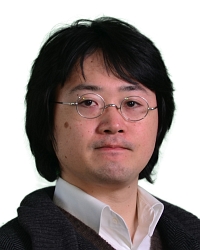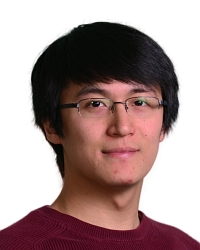TR2023-004
Inverse design of two-dimensional freeform metagrating using an adversarial conditional variational autoencoder
-
- , "Inverse design of two-dimensional freeform metagrating using an adversarial conditional variational autoencoder", SPIE Photonics West, DOI: 10.1117/12.2650299, January 2023.BibTeX TR2023-004 PDF
- @inproceedings{Kojima2023jan,
- author = {Kojima, Keisuke and Koike-Akino, Toshiaki and Wang, Ye and Jung Minwoo and Brand, Matthew},
- title = {{Inverse design of two-dimensional freeform metagrating using an adversarial conditional variational autoencoder}},
- booktitle = {Proc. SPIE 12431, Photonic and Phononic Properties of Engineered Nanostructures XIII},
- year = 2023,
- month = jan,
- publisher = {SPIE},
- doi = {10.1117/12.2650299},
- url = {https://www.merl.com/publications/TR2023-004}
- }
- , "Inverse design of two-dimensional freeform metagrating using an adversarial conditional variational autoencoder", SPIE Photonics West, DOI: 10.1117/12.2650299, January 2023.
-
MERL Contacts:
-
Research Areas:
Artificial Intelligence, Electronic and Photonic Devices, Machine Learning
Abstract:
Inverse design of two-dimensional freeform metagrating using an adversarial conditional variational autoencoder Keisuke Kojimaa, Toshiaki Koike-Akinob, Ye Wangb, Minwoo Jungb, c, and Matthew Brandb aBoston Quantum Photonics LLC, 588 Bost Post Rd #315, Weston, MA 02493, USA bMitsubishi Electric Research Laboratories, 201 Broadway, Cambridge, MA 02139, USA cDepartment of Physics, Cornell University, Ithaca, NY 14853, USA. ABSTRACT For the inverse design of metagratings and metasurfaces, generative deep learning has been widely explored. Most of the works are based on a conditional generative adversarial network (CGAN) and its variants, however, selecting proper hyper parameters for efficient training is challenging. An alternative approach, an adversarial conditional variational autoencoder (A-CVAE) has not been explored yet for the inverse design of metagrat- ings and metasurfaces, even though it has shown great promise for the inverse design of planar nanophotonic waveguide power/wavelength splitters recently. In this paper, we discuss how A-CVAE can be applied for two-dimensional freeform metagratings, including the training dataset preparation, construction of the network, training techniques, and the performance of the inverse-designed metagratings.


